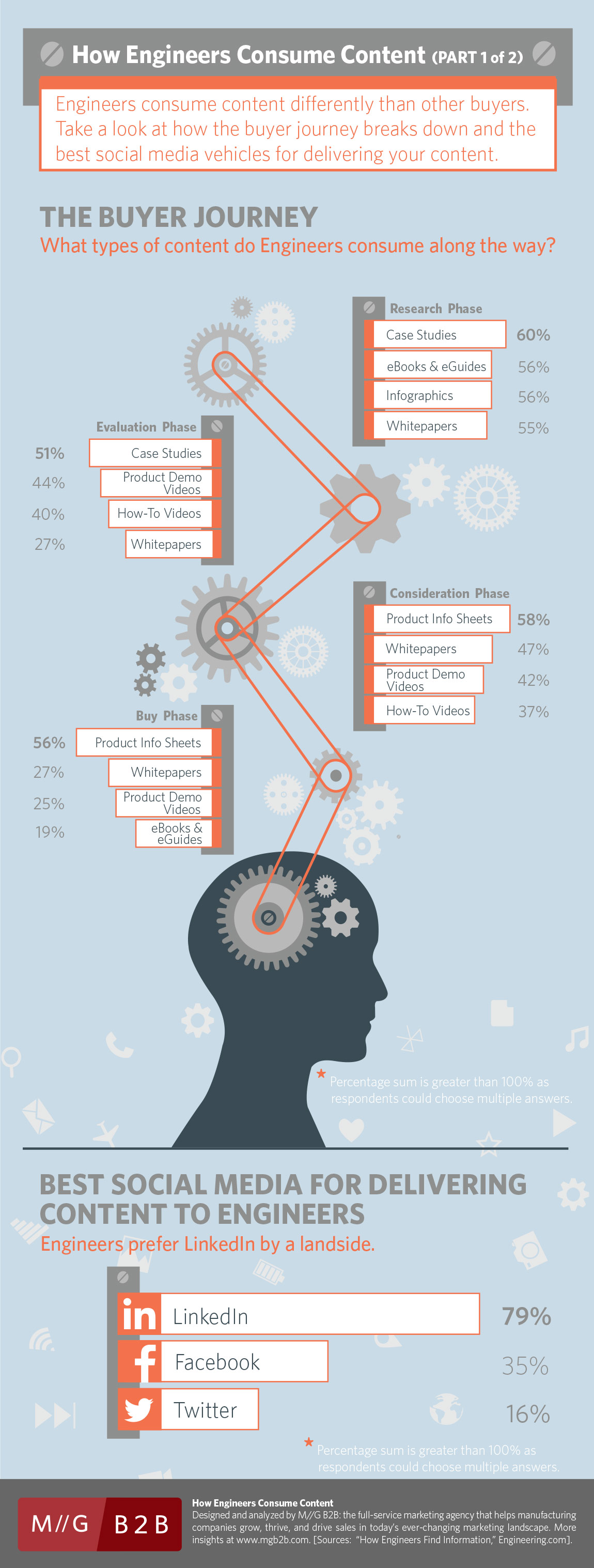B2B Myth of the Week: Your Content Calendar Is Your Content Strategy
by MGB2B
The Myth: A Content Calendar Is the Same As a B2B Content Strategy
The Truth: They Are Both Important for Your Content Program, But Far from Equal
“We need more content!”
“Content is king.”
“Fill up the funnel!”
The clamor for more and more content is ubiquitous in corporate America. And many businesses just keep creating more and more of it without taking a step back to figure out what will work and what won’t. Now, having a content calendar is a step in the right direction. A content calendar helps you determine when exactly you are going to post which pieces of content. It helps you plan out your content distribution on a monthly or weekly basis.
But it is not the same as a content strategy.
So What Is a B2B Content Strategy?
A content strategy is your company’s content bible. It determines the who, what, how, and why that will drive your content program. Determining the when comes later (i.e. when you create your content calendar).
Here’s What You’ll Need to Get Started:
- Background. Where have you been in terms of a content program? What have you done so far? What kind of success have you had? Write up a summary so that anyone in your organization who contributes, edits, or distributes content knows what’s been done. And where you’d like to go next.
- Goals. Why are you doing this? What is the purpose of your content program? If you don’t know the purpose, you won’t be able to come up with content that works. You are just throwing ideas at the wall to see what sticks. Drill down with your goals. What are your overall goals as a company? As a marketing department? What do you want your content to achieve? Answer these questions. Then, establish realistic benchmarks by which to measure the success of the program.
- Content Mission Statement. This ties in very closely with your Goals. You have a mission statement for your brand. But do you have one for your content? If the answer is no, it’s time to get one down on paper. Your Content Mission Statement should clearly state the purpose of your content program and what it will help your target audience accomplish.
- Personas. There’s been a lot of buzz about buyer personas for well over a decade now. And there’s a reason. Every B2B brand needs them. Not just for their content programs, but for traditional advertising as well. Different from a more general target audience, a persona is a fictional profile of a person your company is trying to target. It gives you a clearer picture of your customer – what their interests are, what their challenges are, title, home life, work life. Everything you need to know to create content that will resonate with buyers. Some companies have only two. Some have two in every vertical, each representing a different decision maker. You’ll want to use research on your core users to make sure you get this part right. If you don’t know who you’re talking too, your message is as good as dead.
- Contributors. Personas are your first who. Contributors are your second. Who in your organization (or outside of it) will be creating this content to dazzle your customers and pull in new leads? This step is often skipped, but I can’t tell you how important it is. Scrambling to find people to write content on the fly is time-consuming and often frustrating. So plan as much in advance as you can. Make sure you know who will be writing blog posts, who will create video content, who will make memes, etc. It’s also good to know who will be editing content to make sure your brand voice is consistent in every medium, as well as who will be distributing content on your social media channels.
- Content Type. It’s easy to say “we want to do everything!” and try to jump right into creating blogs, videos, whitepapers, apps, quizzes, and the like. But you need to be realistic. Think about the following three things. Somewhere in the middle lies the meat of your program.
- What your team is able to produce in-house
- Which resources you need to pull in from outside your organization
- What your target wants to digest
- Lead Nurturing Process. Once your content drives leads into your funnel, how will you drive them further into it until they make a purchase? Which behavior triggers which content? If someone downloads your whitepaper, what do they get next and when? It’s important to determine this in advance, so you are not creating content on the fly. If you know what you’ll need down the road, create it now, so you can have it at the ready.
- Metrics. As mentioned in the goals earlier, you’ll need to establish benchmarks by which to measure the success of your content program. Are you measuring engagement? Conversion? Determine this from the get-go so that you know what’s working and what’s not. You can take a look every few months and make changes in order to increase your success rate.
- Next Steps. Make an initial to-do list for your team so that when they finish reading your Strategy, they know exactly what they need to do to set it in motion.
- Patience. While this isn’t something you’ll see actually written in your B2B Content Strategy, it’s still important to include. With Content Marketing, you are essentially creating a new machine in your company. There will be bumps in the road. Take your time, and implement your Strategy carefully. Your patience will have a positive impact on your team, your brand, and perhaps most important… your sanity.
Once your Content Strategy is in place, you’re ready to roll. Start writing. And creating. And giving your buyers just what they’re looking for. Then get ready to take your brand to the next level.
Continue Reading



